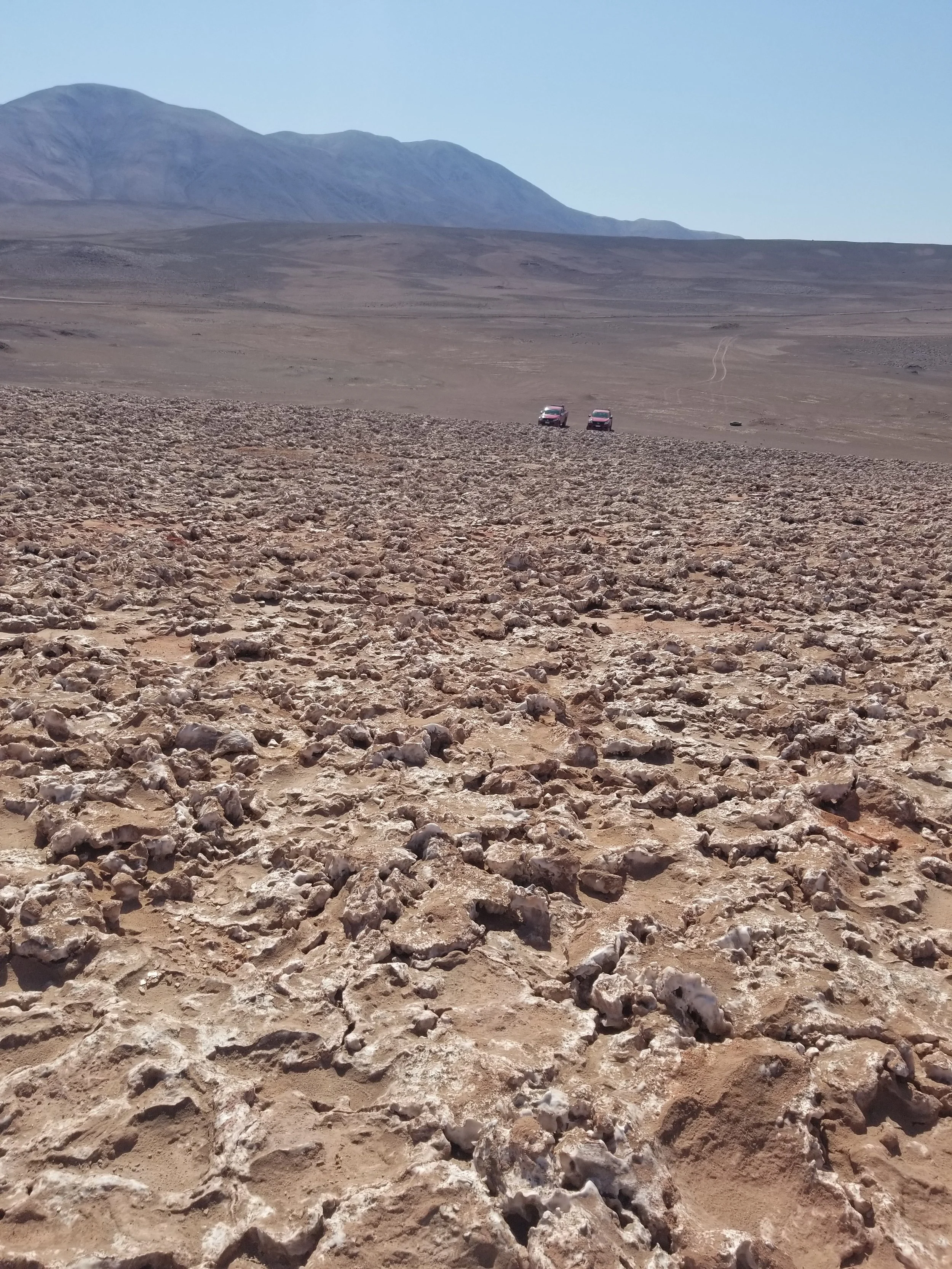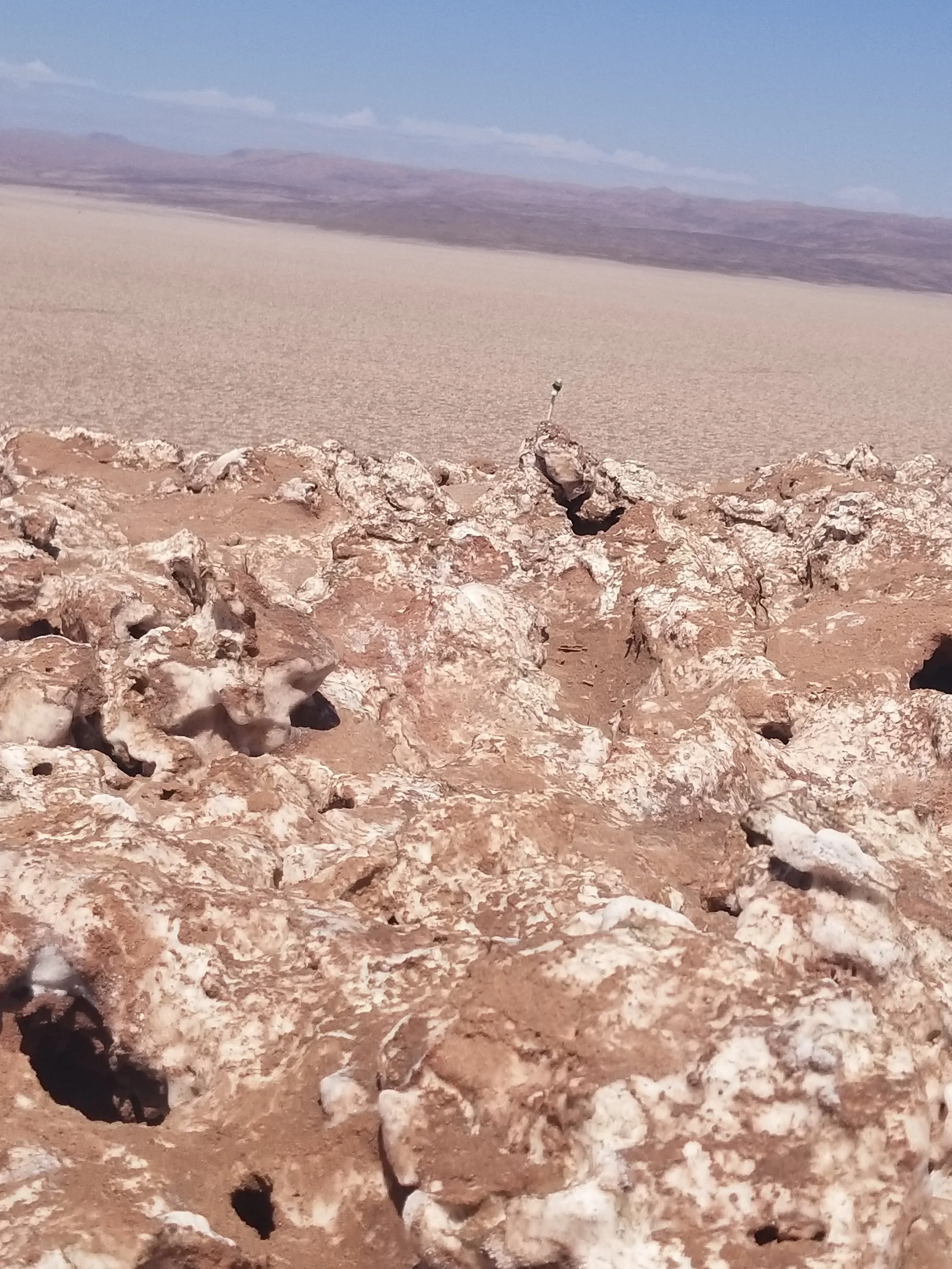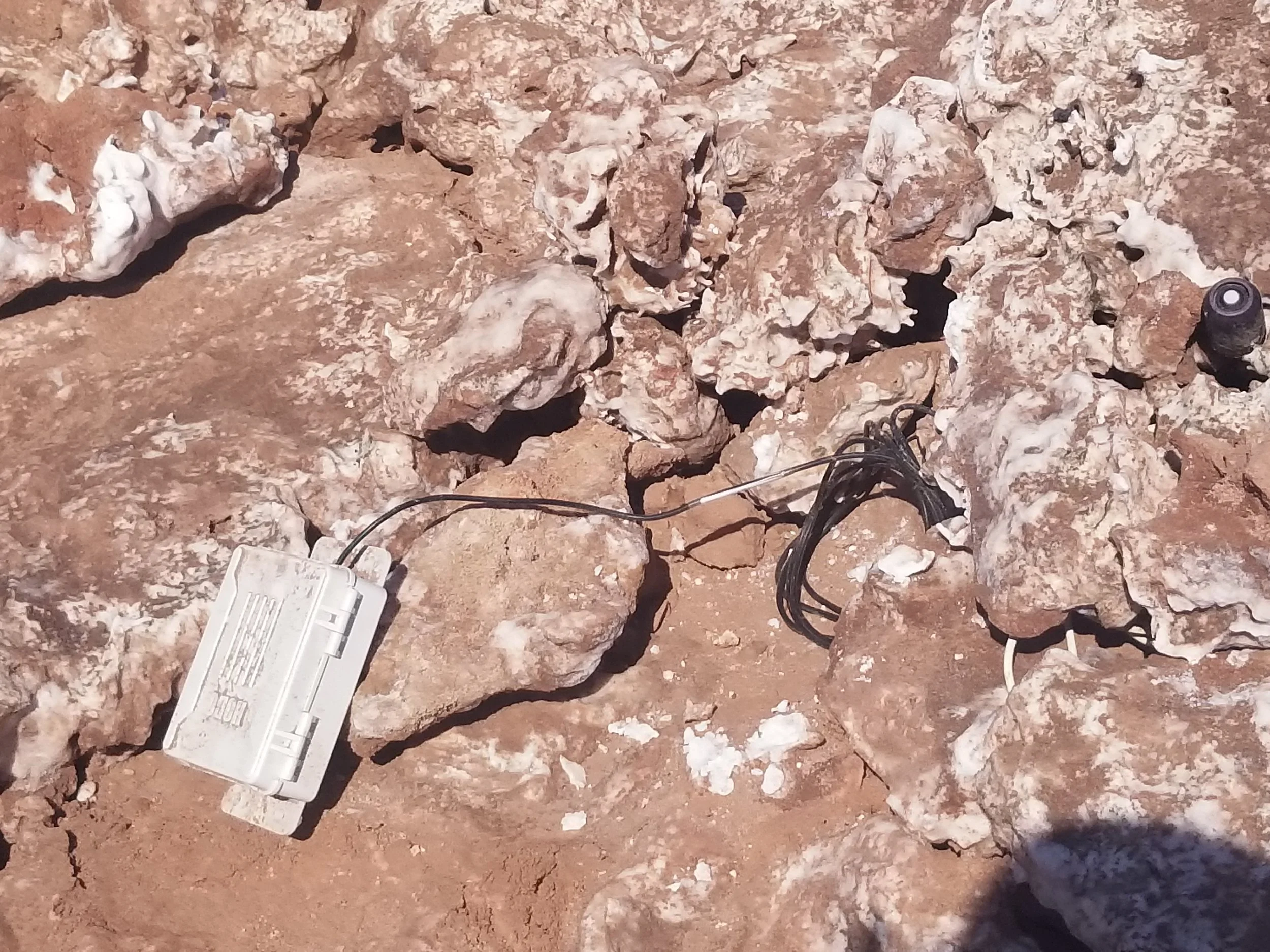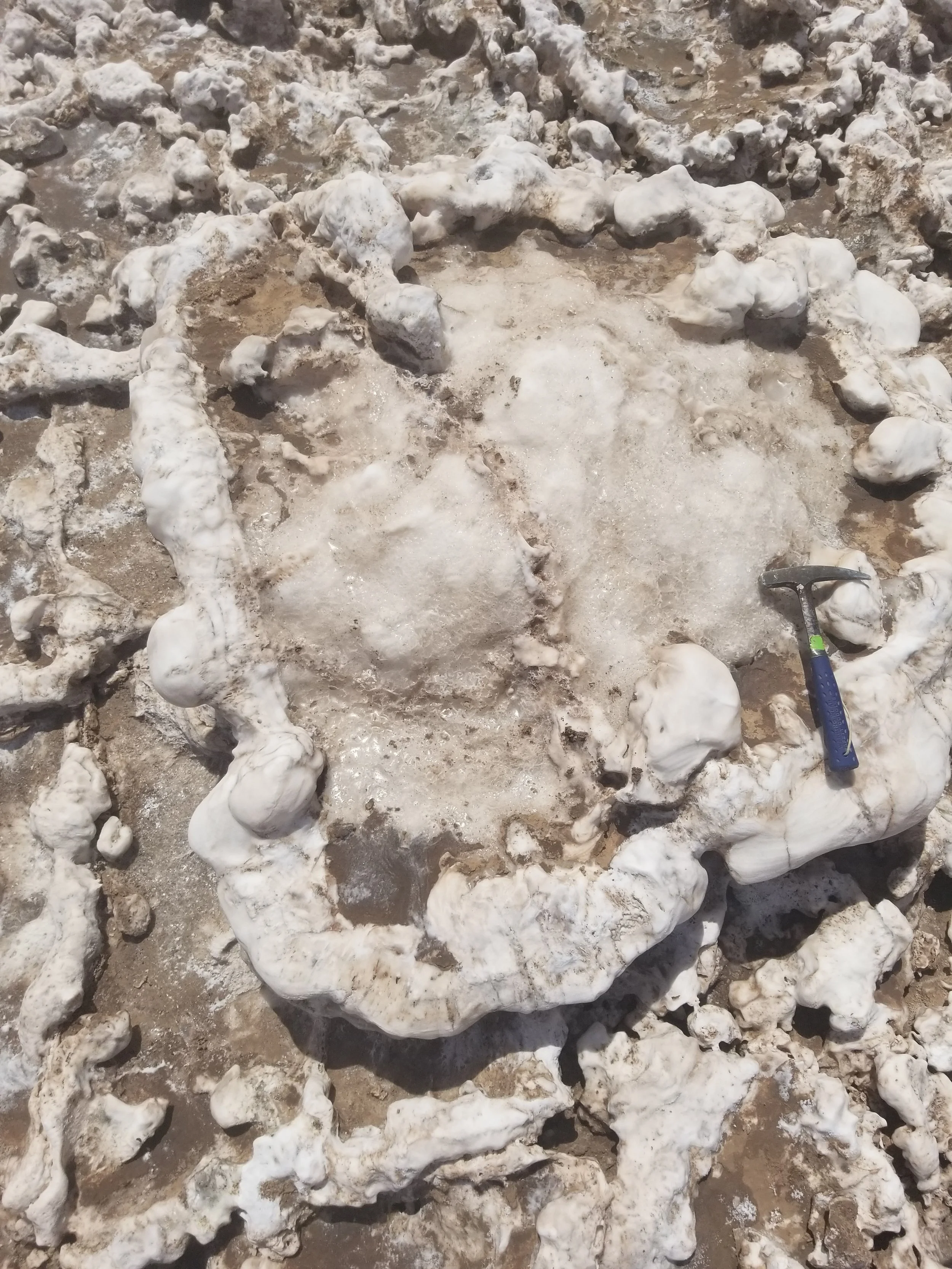Intimacies of Multispecies Space-times
by Dana Burton
In the hyper-arid core of the Atacama Desert, certain geological formations called halites are the havens of microbial communities thatare able to endure just 2milimeters of rainfall a year. A NASA scientistexplained how this was possible, "In the window of time during theday when [microbes] have access to both water (from fog) andsunlight to do photosynthesis, they are able to produce enoughenergy to power the rest of the community." Because of their ability tosurvive the dryest hot desert on Earth, these communities are an analog for life in extreme locations on this planet, as well as models for what may have occurred on others, such as Mars. These intense desert conditions, that are a result of thousands of years of climatic changes, draw our attention to other significant intensities such as the centuries-old mining industry that has deleterious repercussions on human and environmental health, Chile’s former dictatorship and their institutionalization of neoliberal policies as a national project, and much more that provoke us to recognize the intimate ways these phenomena have affected our lives. The following images invite us to linger with microbes. Taken during the 10 days I spent following scientists in the Atacama Desert, Chile in March 2020 as a part of my research of astrobiology at NASA, these photographs are a window into scientists’ efforts to understand the parameters of life on and beyond Earth. Or lifes as scientists remain open to how the emergence of biology in other planetary contexts may have generated divergent forms from what we see on Earth. As such, the images are intended to visually prompt us to attend to life as it is experienced differently multispecies space-times from the tempos of microbial diurnal survival and millennial adaptation, to the cyclicality of wetness and dryness across the desertscape. What kinds of critical questions and speculations may we be pushed to grapple with from re-situating ourselves to a multispecies rather than human position?








